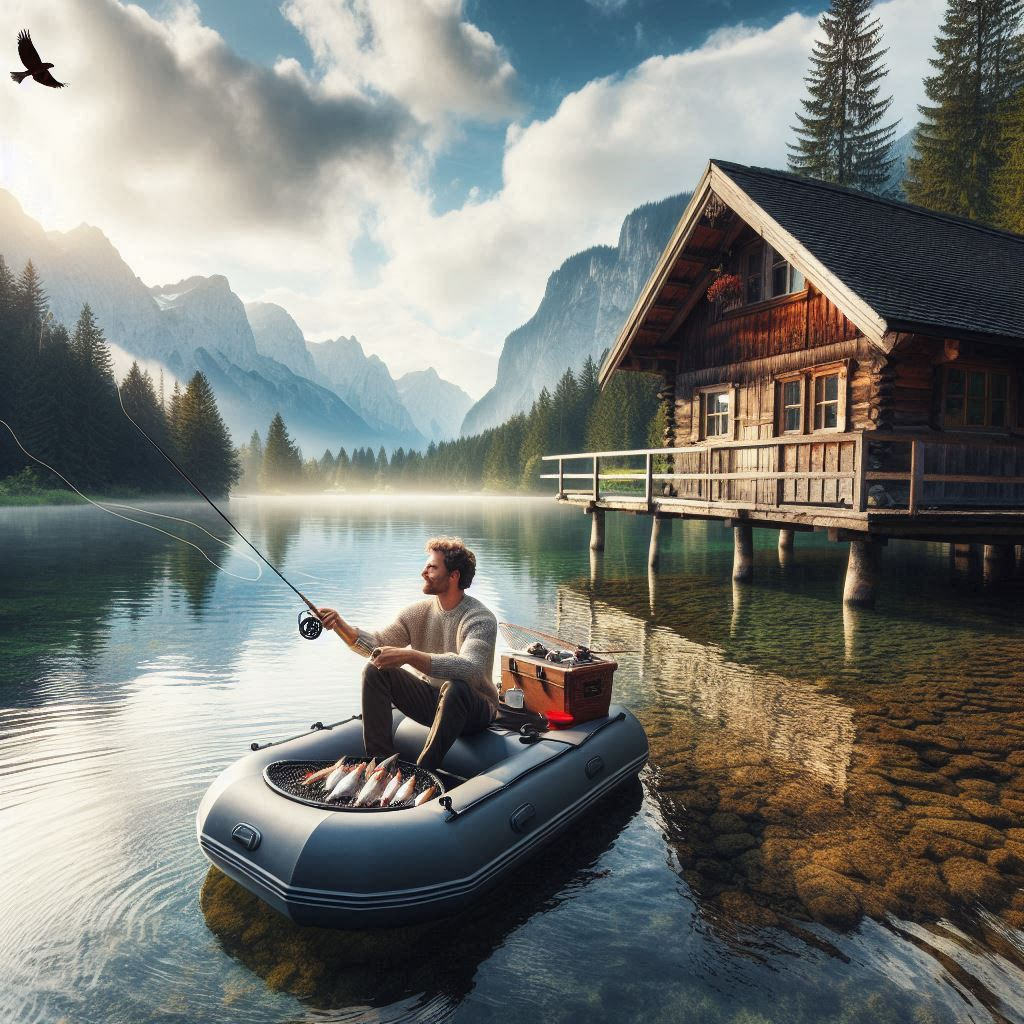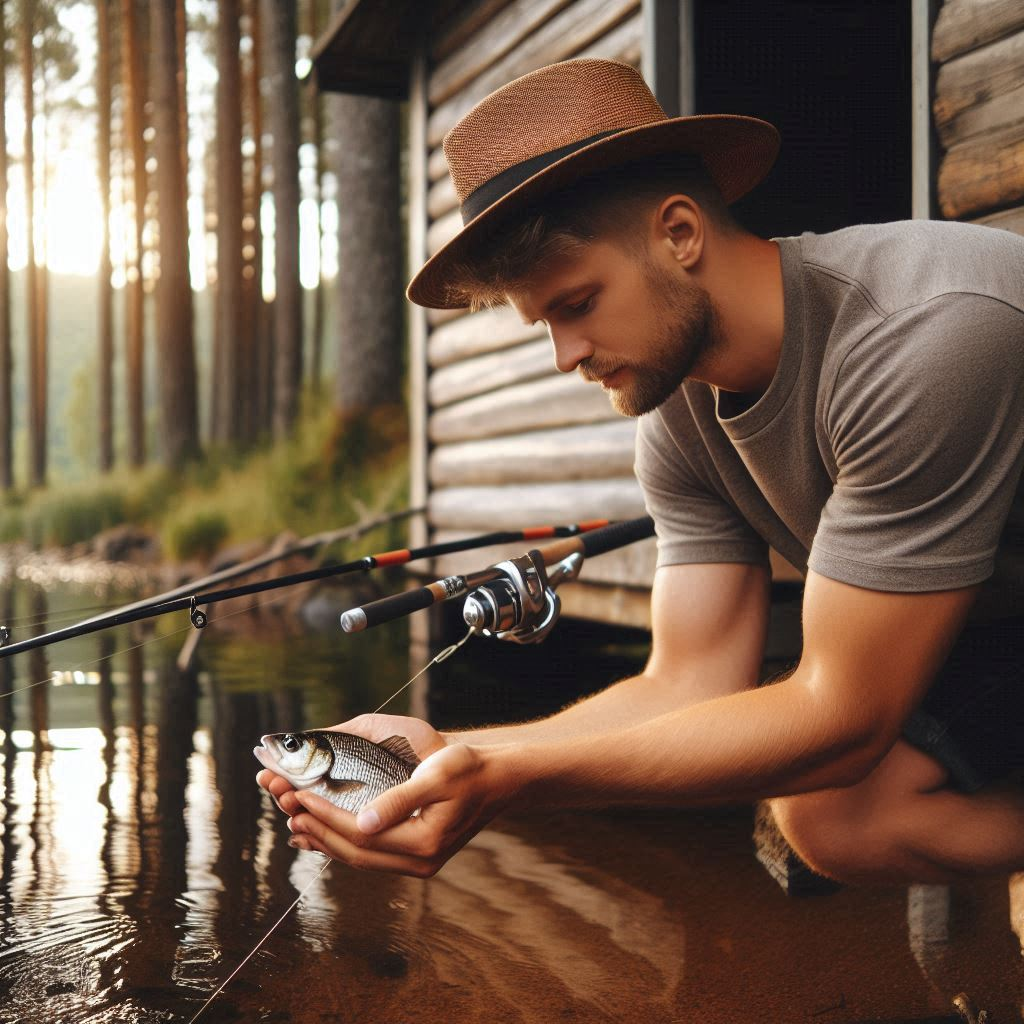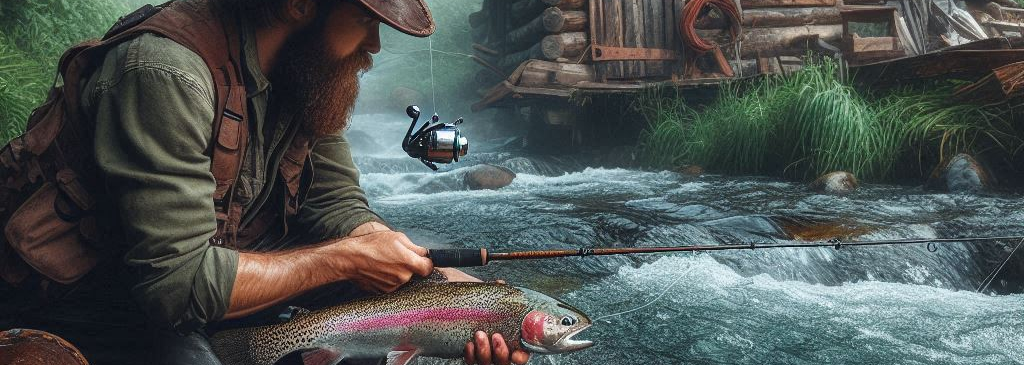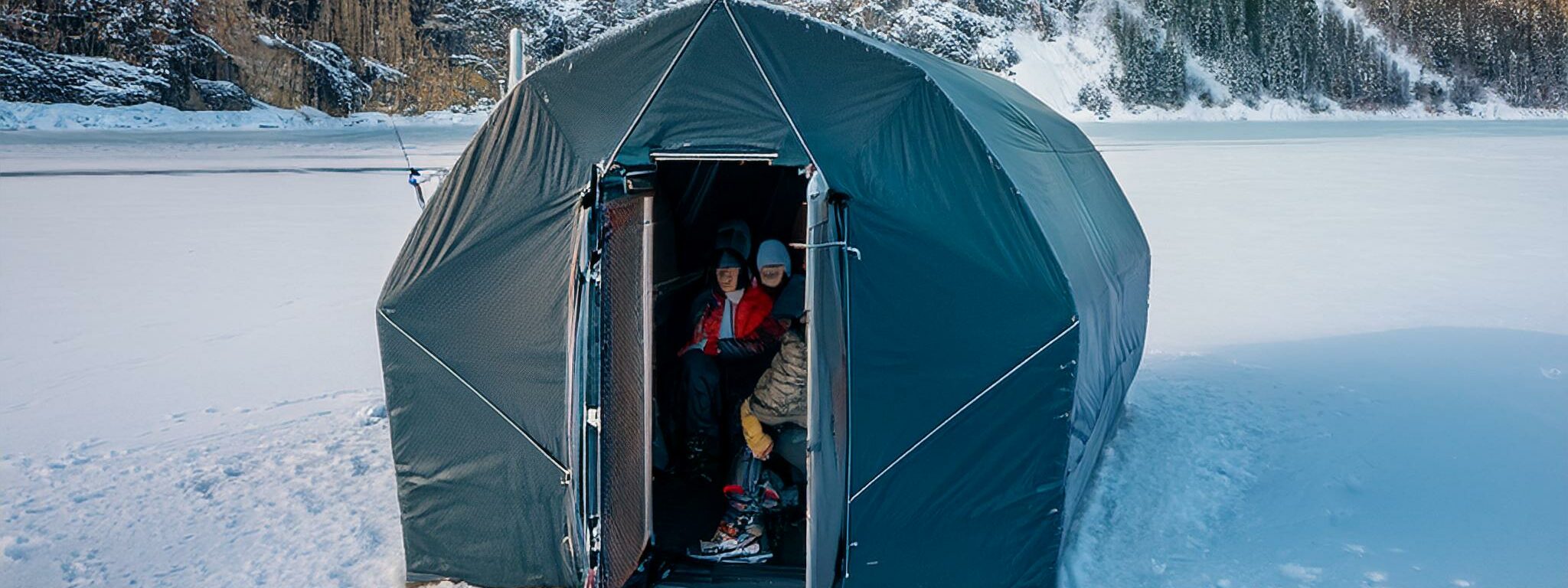If you’re new to the sphere of angling, understanding freshwater trout is your ticket to an enjoyable fishing experience. Let’s get into the habitat of these intriguing fish. Freshwater trout thrive in cold, clear waters rich in oxygen. They’re often found in streams, rivers, and lakes, where they can be as fickle as they are finicky. Knowing where they like to hide – think undercut banks, submerged logs, and deep pools – can mean the difference between a bite and a calm day observing nature’s beauty.
Now let’s gear up. I’m going to introduce you to the essential gear you’ll need. A lightweight rod with a matching reel is your fundamental tool. Add to that, a selection of hooks, weights, and floats suited to trout fishing. Don’t forget a good-quality fishing line that strikes a balance between sensitivity and strength; trout are known for their soft bite, but they sure put up a feisty fight.
The company below has some very nice and high quality fishing gear if you are looking for a good rod and reel. Just click on the banner to take a look at their extensive inventory.
You’re going to find out that timing is everything. The best seasons for trout fishing vary by region, but spring and fall generally offer prime conditions. Mornings and evenings, when insects are most active, are high times for making a catch. This isn’t just about luck; it’s about understanding trout patterns.
While trout fishing can be exhilarating, it’s crucial to stay current on catch and release practices. Keeping the ecosystem’s health in mind ensures future generations can enjoy fishing as much as we do. Get to know the local regulations and practice good fishing etiquette – it’s part of being a responsible angler.
Let’s pivot a bit here. With the basics under your belt, you’re well on your way. But there’s so much more to mastering trout fishing. Up next, I’ll delve into the advanced strategies that separate everyday anglers from true trout whisperers. Expect to go beyond common knowledge as we explore reading the water, choosing between fly and spin fishing, and much more. I’m here to guide you towards those trophy catches so strap in, the journey to expert angling just got exciting.
Advanced Techniques for the Avid Angler
Now that you’ve got a grip on the basic principles of freshwater trout fishing, you might be itching to take your angling skills up a notch. What’s going to really set you apart as an experienced trout fisherman isn’t just the size of your catch, but the techniques and knowledge you apply to each fishing trip. In my opinion, there’s a profound sense of reward that comes from mastering advanced fishing methods.
You’re going to find out about how to read the water – a crucial skill for locating trout. Streams and rivers have fast and slow-moving patches, and trout love to hang out where these meet. Understanding how to identify these sweet spots can become the heart of your success. It might seem like a puzzle at first, but once you get the hang of it, you’ll spot these locations with ease.
Fly fishing is an art form in itself and preferred by many for its technique and the connection it gives to the fishing experience. Conversely, spin fishing offers its own set passivity and allure, especially in different waters or when targeting trout less responsive to flies. Both practices have their place, and I’m here to help you with choosing the style that resonates with you.

Tailoring your bait and tackle can make all the difference. I’ll let you in on some insights: Each trout species has a different culinary taste. Some trout may go crazy for certain live baits, like worms or minnows, whereas others might prefer powerbait or spinners. The trick is experimenting with a variety of baits and lures to find what works best in your local waters.
And let’s not forget the behavior and patterns of trout. They’re not just mindless fish; they have feeding patterns, seasonal preferences, and environmental comforts that can help dictate your strategy. Paying attention to these aspects can significantly elevate your effectiveness as an angalese.
Finally, patience and persistence are your best pals when it comes to landing the bigger fish. Just don’t focus too much on perfection; trout fishing should be enjoyable, not stressful. Keep an eye on the line, feel the rhythm of the rod, and when the moment comes, set the hook! Remember, your first attempt doesn’t need to be your last; there’s a lot of opportunity in persistence.
Sustain and Enjoy: The Lifestyle of Responsible Trout Fishing
In my opinion, fishing is more than just a sport.
Sustain and Enjoy: The Ethics of Trout Fishing
I’m here to help you understand the importance of fishing with a conscience. Trout fishing isn’t just about the thrill of the catch; it’s also deeply connected to respecting and preserving the natural habitats where these beautiful creatures thrive.
Firstly, adopting catch and release practices helps maintain healthy trout populations. By using barbless hooks and handling fish with care, you ensure future generations can enjoy the same experiences you’ve had.

You’re going to find out about contributing to conservation efforts and how being an informed angler makes a real difference. Supporting stocking programs, habitat restoration, and pollution cleanup are ways you can give back to the ecosystem while enjoying your hobby.
Choose something that resonates with you when preparing your catch. If you decide to keep a trout, make sure you’re well-versed in humane methods of harvest, and that you’re following all local size and bag limits. And of course, there’s nothing like the taste of a fresh, self-caught dinner!
A lot is happening very quickly in the world of conservation, and it’s essential to stay current with regulations and conservation status. Joining local angling groups or participating in forums can keep you informed and connected to a network of responsible fishermen.
By incorporating these practices into your trout fishing routine, you’re not just enjoying a pastime; you’re acting as a steward of the environment. And that’s the strategy I like to leverage—a harmonious balance between leisure and responsibility, ensuring that our freshwater ecosystems remain vibrant and teeming with life for everyone to enjoy.
As an Amazon Associate I earn from qualifying purchases.







Hi there
I like that your article provides a comprehensive and engaging guide for both novice and experienced anglers. It provides detailed insights into the best practices for catching trout, including tips on equipment, techniques, and ideal fishing locations. The inclusion of personal anecdotes and stunning photography adds a personal touch that makes the content even more relatable and enjoyable to read.
How do you decide on the best fishing spots and techniques featured in your articles?
Hi Troy,
Thank you for your comment. As for how to decide where to fish and what techniques to use, it depends on where you live of course and also learning by just getting out there and start fishing.
Usually, if your are on a small lake, which I prefer, you will see other fishermen fishing and you can ask them what they are using for bait and tackle and you can learn a lot just by asking other fishermen.
The local fish shop owners will also be able to tell what the fish are biting on and help you with that also.
Mike Powers
Cabin Living Today